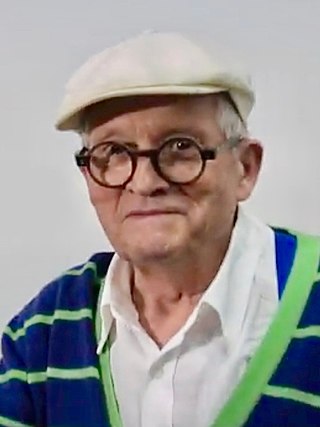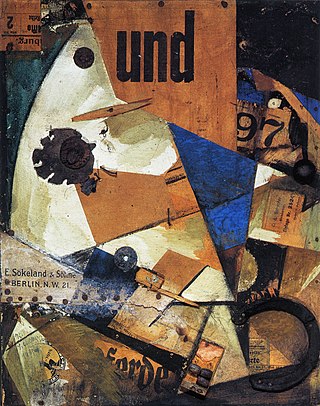
The Guggenheim Museum Bilbao is a museum of modern and contemporary art designed by Canadian-American architect Frank Gehry, and located in Bilbao, Basque Country, Spain. The museum was inaugurated on 18 October 1997 by King Juan Carlos I of Spain, with an exhibition of 250 contemporary works of art. Built alongside the Nervion River, which runs through the city of Bilbao to the Cantabrian Sea, it is one of several museums belonging to the Solomon R. Guggenheim Foundation and features permanent and visiting exhibits of works by Spanish and international artists. It is one of the largest museums in Spain.

The Solomon R. Guggenheim Foundation is a nonprofit organization founded in 1937 by philanthropist Solomon R. Guggenheim and his long-time art advisor, artist Hilla von Rebay. The foundation is a leading institution for the collection, preservation, and research of modern and contemporary art and operates several museums around the world. The first museum established by the foundation was The Museum of Non-Objective Painting, in New York City. This became The Solomon R. Guggenheim Museum in 1952, and the foundation moved the collection into its first permanent museum building, in New York City, in 1959. The foundation next opened the Peggy Guggenheim Collection in Venice, Italy, in 1980. Its international network of museums expanded in 1997 to include the Guggenheim Museum Bilbao in Bilbao, Spain, and it expects to open a new museum, Guggenheim Abu Dhabi, in the United Arab Emirates after its construction is completed.

Modern art includes artistic work produced during the period extending roughly from the 1860s to the 1970s, and denotes the styles and philosophies of the art produced during that era. The term is usually associated with art in which the traditions of the past have been thrown aside in a spirit of experimentation. Modern artists experimented with new ways of seeing and with fresh ideas about the nature of materials and functions of art. A tendency away from the narrative, which was characteristic for the traditional arts, toward abstraction is characteristic of much modern art. More recent artistic production is often called contemporary art or postmodern art.

David Hockney is an English painter, draftsman, printmaker, stage designer, and photographer. As an important contributor to the pop art movement of the 1960s, he is considered one of the most influential British artists of the 20th century.

Guernica is a large 1937 oil painting by Spanish artist Pablo Picasso. It is one of his best-known works, regarded by many art critics as the most moving and powerful anti-war painting in history. It is exhibited in the Museo Reina Sofía in Madrid.
Jesús Mari Lazkano is a Spanish Basque painter. He graduated in fine arts from the University of the Basque Country, where he is Professor of Fine Arts, and has had exhibitions in Europe, America and Asia. Some of his work is part of the Bilbao Guggenheim Museum collection.

Brian Alfred Christopher Bushell Sewell was an English art critic. He wrote for the Evening Standard and had an acerbic view of conceptual art and the Turner Prize. The Guardian described him as "Britain's most famous and controversial art critic", while the Standard called him the "nation’s best art critic".
Rosa Martínez is an independent curator, art critic and international art advisor based in Barcelona, Spain.

The Bilbao Fine Arts Museum is an art museum located in the city of Bilbao, Spain. The building of the museum is located entirely inside the city's Doña Casilda Iturrizar park.
Miguel Condé is a Mexican figurative painter, draughtsman, and print maker. According to Radio France, he is "one of the most important contemporary masters in the field of engraving." Condé's works are in important museum collections all over the world; he is exhibiting regularly at both public and private venues, and he has received numerous international honors and awards.

Charles M. Falco is an American experimental physicist and an expert on the magnetic and optical properties of thin film materials.
Manolo Valdés is a Spanish artist residing in New York, working in paint, sculpture, and mixed media. He introduced to Spain a form of expression that combined political and social obligations with humor and irony.

Sergei Sviatchenko is a Danish - Ukrainian architect, artist, photographer and curator. He is a representative of the Ukrainian New Wave, that arose in Ukraine up through the 1980s. Initiator and creative director of the Less Festival of Collage, Viborg and Just A Few Works. He has lived in Denmark since the 1990s. Sviatchenko graduated from Kharkov National University of Construction and Architecture in 1975, and in 1986 he studied a Ph.D. at the National Academy of Visual Arts and Architecture. Sviatchenko is the son of architect Evgenij Sviatchenko (1924-2004), who was professor of architecture and a member of the National Ukrainian Academy of Fine Arts and Architecture, and engineer Ninel Sviatchenko (1926-2000). In 1975 Sergei Sviatchenko completed his architectural studies at Kharkov National University of Construction and Architecture. Sergei Sviatchenko is especially oriented towards architecture's modern expressions, among these are Constructivism and the contemporary European Bauhaus movement. From his teacher, Professor Viktor Antonov, Sviatchenko was introduced to the film director Andrei Tarkovsky, and particularly his film Mirror from 1975 has left a thematic footprint in Sviatchenko's more recent collage art. After having worked as an architect for a number of architectural firms in Kharkov until 1983, Sviatchenko moved to Kyiv, where he successfully graduated the master's program at Kyiv National University of Construction and Architecture|Kiev National University of Construction and Architecture, having completed his Ph.D. dissertation "Means to Visual Information in Architecture". In the 1980s he was one of the founders of the Soviart Center for Contemporary Art (Soviart) in Kiev and co-organizer and curator of the first Ukrainian exhibitions of contemporary art ”Kiev-Tallinn” at Igor Sikorsky Kyiv Polytechnic Institute|Kiev Polytechnic Institute(1987), ”Kiev-Kaunas” (1988), the first joint exhibition by Soviet and American artists (1988) and curated the first Ukrainian exhibitions in Denmark: ”21 perceptions. Young Contemporary Ukrainian Artists” (1989), ”Ukrainian Art 1960-80” (1990), ”7 + 7” which was the first joint exhibition by Soviet and Danish artists (1990) and ”Flash. A New Generation of Ukrainian Art” (1990). At the end of 1990 Sviatchenko moved to Denmark with his wife Helena Sviatchenko having been awarded an art scholarship. In the same year he began to participate in solo and group exhibitions.

Collage is a technique of art creation, primarily used in the visual arts, but in music too, by which art results from an assemblage of different forms, thus creating a new whole.

The Deutsche Guggenheim was an art museum in Berlin, Germany, open from 1997 to 2013. It was located in the ground floor of the Deutsche Bank building on the Unter den Linden boulevard.

Bigger Trees Near Warter or ou Peinture en Plein Air pour l'age Post-Photographique is a large landscape painting by British artist David Hockney. Measuring 460 by 1,220 centimetres or 180 by 480 inches, it depicts a coppice near Warter, Pocklington in the East Riding of Yorkshire and is the largest painting Hockney has completed.

Portrait of Vincent Nubiola is an oil painting by Spanish artist Joan Miró. Painted in 1917 when Miró was 24 years old, a year before his first exhibition, the portrait is now considered a masterpiece from a period when he experimented with both Cubism and Fauvism. It is also said by some art critics to show the influence of Van Gogh. Acquired for a time by Picasso, the painting is now in the permanent collection of the Folkwang Museum in Essen (Germany).
Jonas Wood is a contemporary artist based in Los Angeles.
Woman Ironing (1904) is an oil painting by Pablo Picasso completed during the artist's Blue Period (1901—1904). This evocative image, painted in neutral tones of blue and gray, depicts an emaciated woman with hollowed eyes, sunken cheeks, and bent form, as she presses down on an iron with all her will. A recurrent subject matter for Picasso during this time is the desolation of social outsiders. This painting, as the rest of his works of the Blue Period, is inspired by his life in Spain but was painted in Paris.
Ceiling Painting/Yes Painting is a 1966 conceptual artwork by the Japanese artist Yoko Ono.















